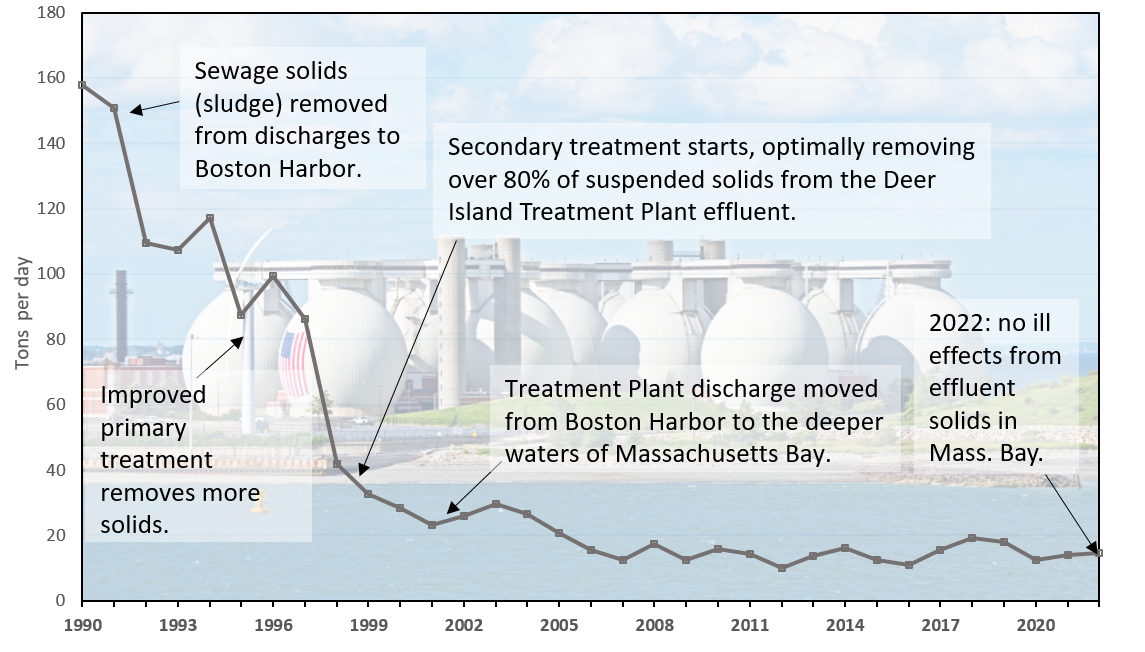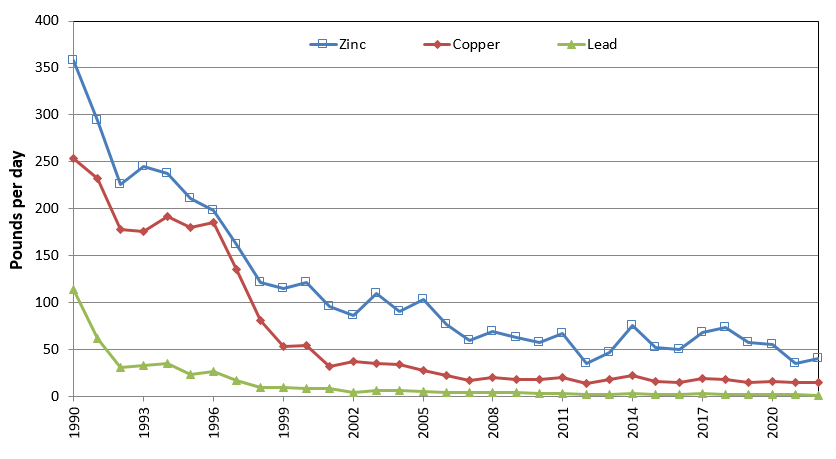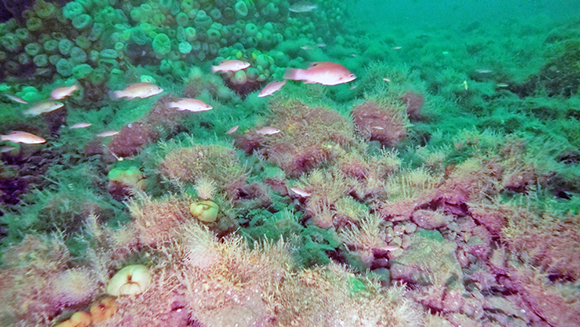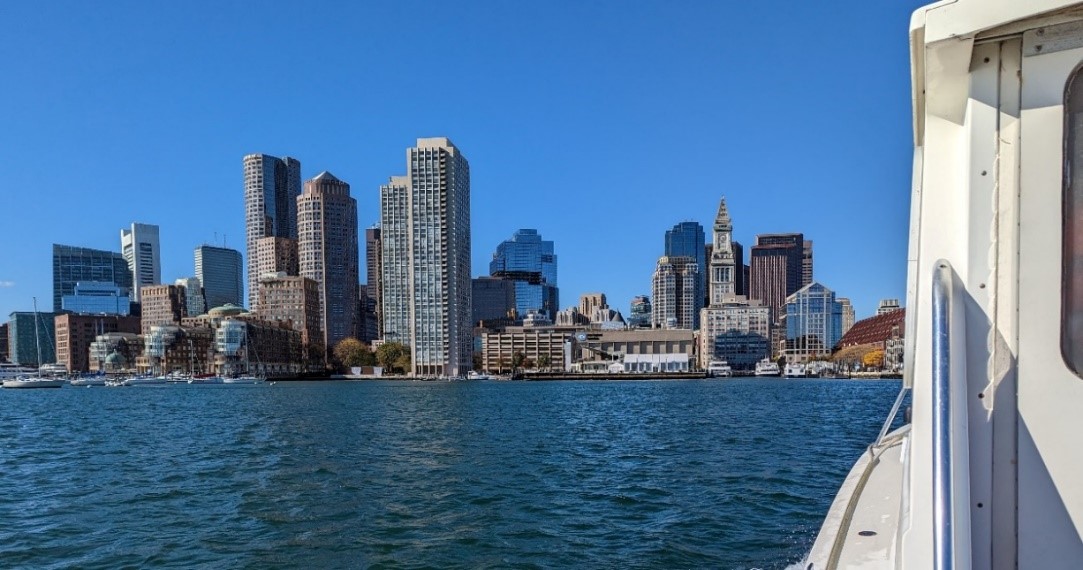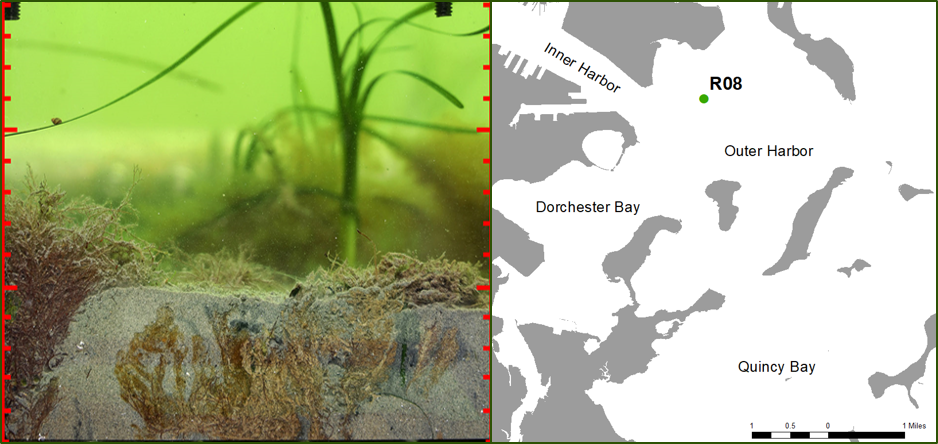MWRA consultant (Battelle) staff measure water quality in Massachusetts Bay.
Massachusetts Water Resources Authority
PRESS RELEASE
Posted:
March 27, 2024
Contact:
Sean Navin
(617) 788-1112, Sean.Navin@mwra.com
MWRA Releases Annual Deer Island Outfall Monitoring Report
The Massachusetts Bay ecosystem remains healthy
|
The Massachusetts Water Resources Authority (MWRA) is pleased to report that environmental monitoring results for 2022 show that the Deer Island Treatment Plant continues to operate as designed, and that discharges had no unexpected effects on the ecosystems of Massachusetts and Cape Cod Bays. Water quality is good and ocean communities remain healthy. The “Boston Harbor Project” was an environmental success Created in 1984, MWRA helped a polluted Boston Harbor by rebuilding an aging sewage treatment system and moving the effluent discharge from the Harbor to Massachusetts Bay. The Deer Island Treatment Plant discharges treated sewage into Massachusetts Bay. A National Pollutant Discharge Elimination System (NPDES) permit for the Deer Island Treatment Plant requires MWRA to test the effluent before it is discharged into the Bay, and also to monitor the bay’s ecosystem. The 2022 Outfall Monitoring Overview details results from this monitoring program. Some are highlighted below. Ocean communities near the Massachusetts Bay outfall are healthy. Marine life thrives on an outfall diffuser in Massachusetts Bay There are more than 100 kinds of animal living near the outfall, which is an indicator of a healthy community. Phytoplankton, tiny algae that float in ocean waters, are at healthy levels. In the 1990s, some flounder had tumors associated with pollutants from sewage. No tumors have been seen in any fish for many years and flounder health has improved near the outfall. Dissolved oxygen (DO) in the Bays system has fluctuated because of regional changes. MWRA monitors to ensure that nutrients in the discharge do not fuel the overgrowth of algae and plants, which can deplete oxygen. We often detect localized, temporary increases in the nutrient ammonium near the outfall and occasionally farther away. In summer of 2022, bottom DO declined to low levels throughout the region, resulting from unusually warm waters and physical factors rather than treatment plant discharge. Stellwagen Bank National Marine Sanctuary, 12 miles west of the MWRA outfall, supports fisheries and is a major feeding ground for whales. We did not detect nutrients from the discharge in these waters, and the bottom communities have remained unchanged. Bottom-water DO reached unusually low concentrations in Stellwagen Basin (on the western side), but rapidly increased after early winter mixing from storms. MWRA has been documenting the recovery of Boston Harbor since 1991.
A generation ago, Boston Harbor was polluted by a failing sewage treatment from a growing population. By the time MWRA was created in 1984, the Harbor was known as one of the dirtiest in the nation; but it has greatly improved from MWRA improvements, including moving the discharge of treated sewage from the Harbor to Massachusetts Bay.
Contaminants of Emerging Concern MWRA is working with other groups to research regional contaminants of emerging concerns, particularly per- and polyfluoroalkyl substances (PFAS), microplastics and pharmaceutical and personal care products (PPCPs). At no cost to ratepayers, MWRA participated in the planning of a pilot study these substances in the effluent and Massachusetts Bay. We are also supporting a research project by Woods Hole Oceanographic Institution, funded by Sea Grant, to investigate the distribution of microplastics throughout the Bay. More Information For more information about water quality in Boston Harbor, its tributary rivers and Massachusetts Bay, visit our Harbor and Bay Water Quality Report page.
|
||||||
### |
Follow us |

